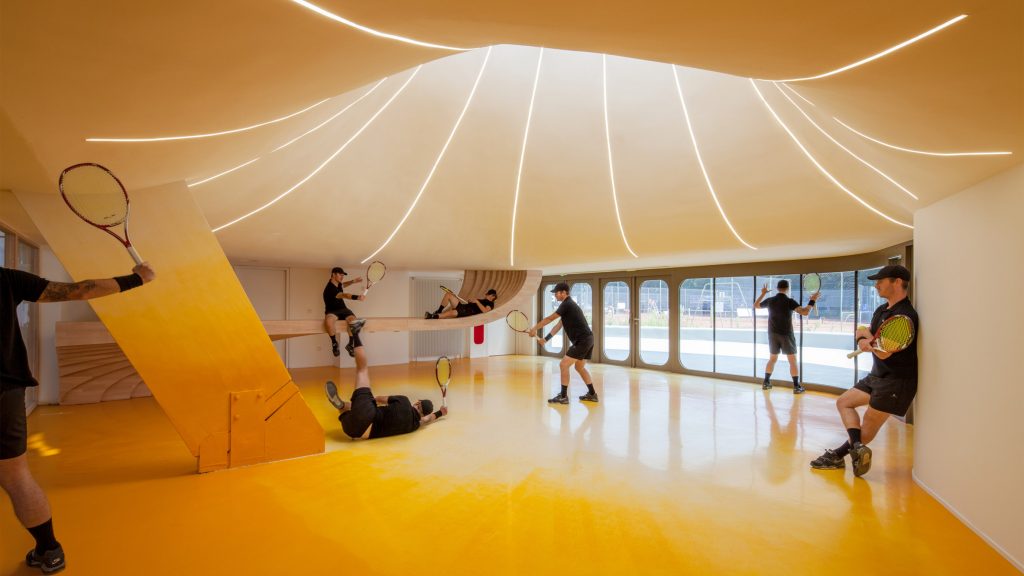We are used to seeing sports facilities as autonomous structures. These great tennis courts and clubhouses prove that sports venues can be derived from and in dialogue with their environment.
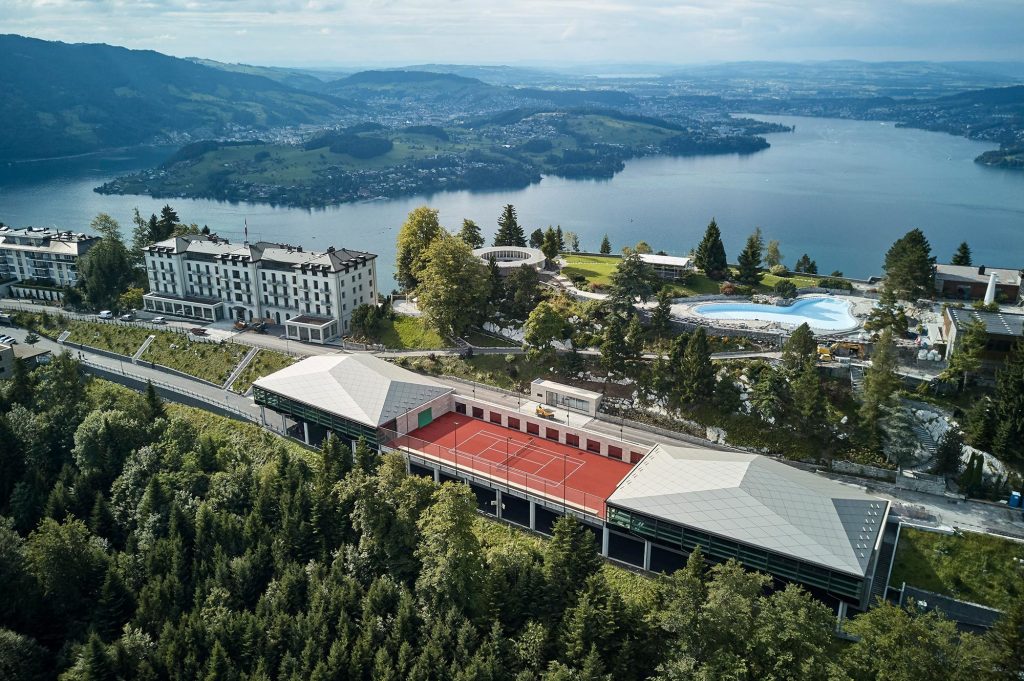
Diamond Domes by Rüssli Architekten
Rüssli Architekten based in Lucerne, Switzerland, has designed Diamond Domes, a tennis club located 874 metres above sea level in the Swiss Alps.
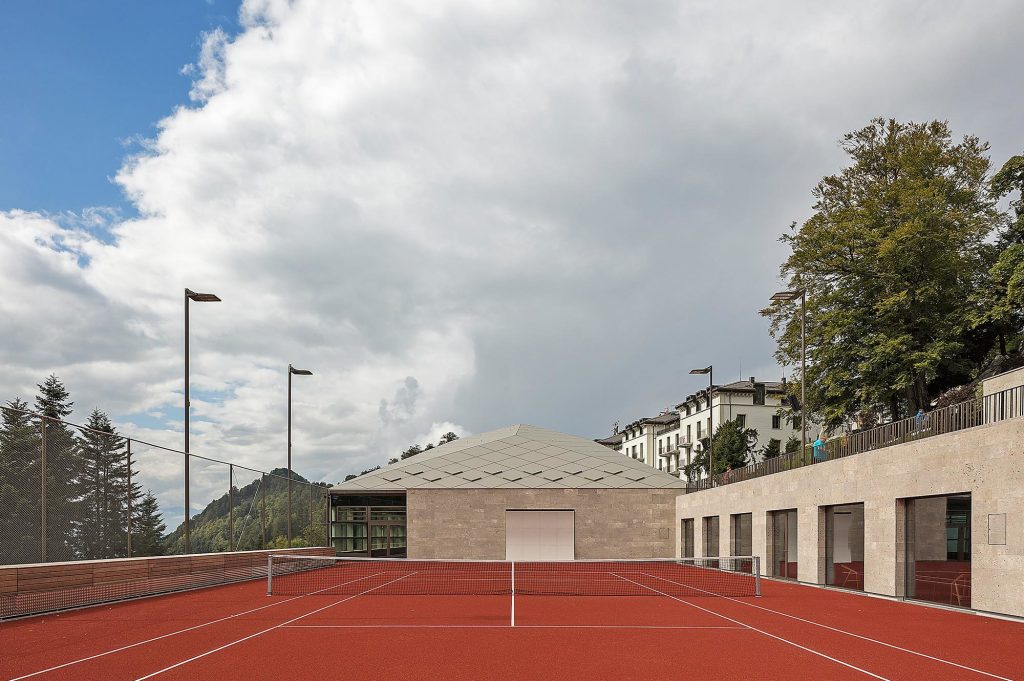
Diamond Domes by Rüssli Architekten
A central outdoor court sits between two symmetrically arranged identical tennis halls with crystal-shaped CLT roofs. The delicate free-standing roof construction spans over a rectangular area some 22 meters wide by 37 meters long and reveals its full grace in the building’s interior.
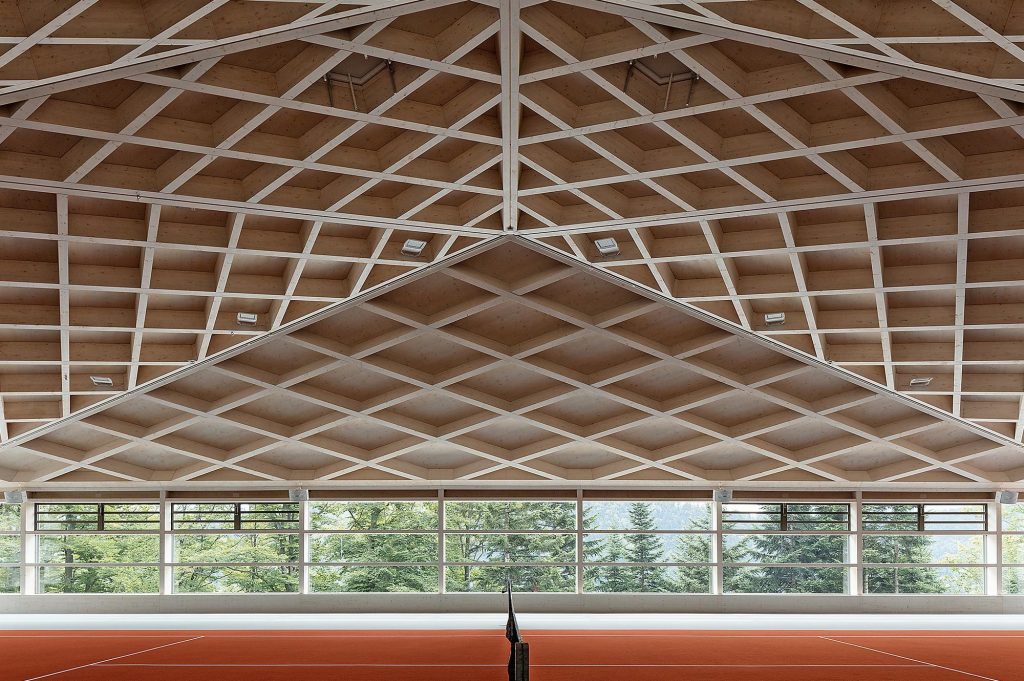
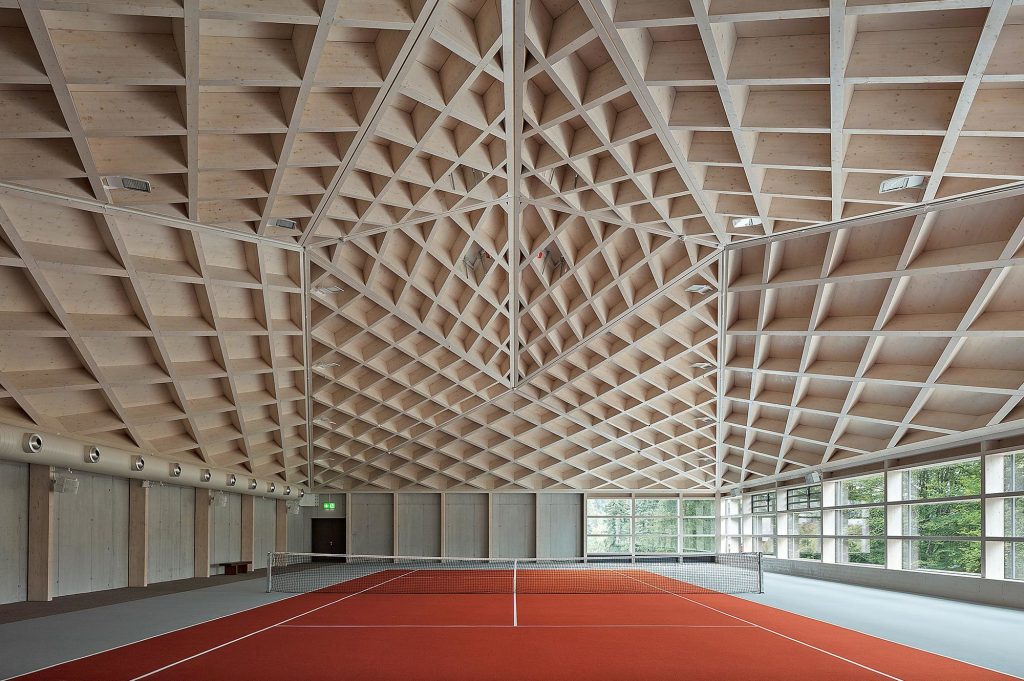
Diamond Domes by Rüssli Architekten
The tennis halls have concrete walls on three sides, with a fourth wall of glazing facing out over the valley below. The “fifth façade” was designed as a faceted roof clad with aluminum composite panels chosen for their durability and colour, which complements the natural stone used for the buildings’ façades. The panels are arranged in a diamond pattern, meant to be reminiscent of crystal formations in rocks, to which the halls owe their name. Vent flaps in the façade and roofs are used to ventilate the courts in summer.
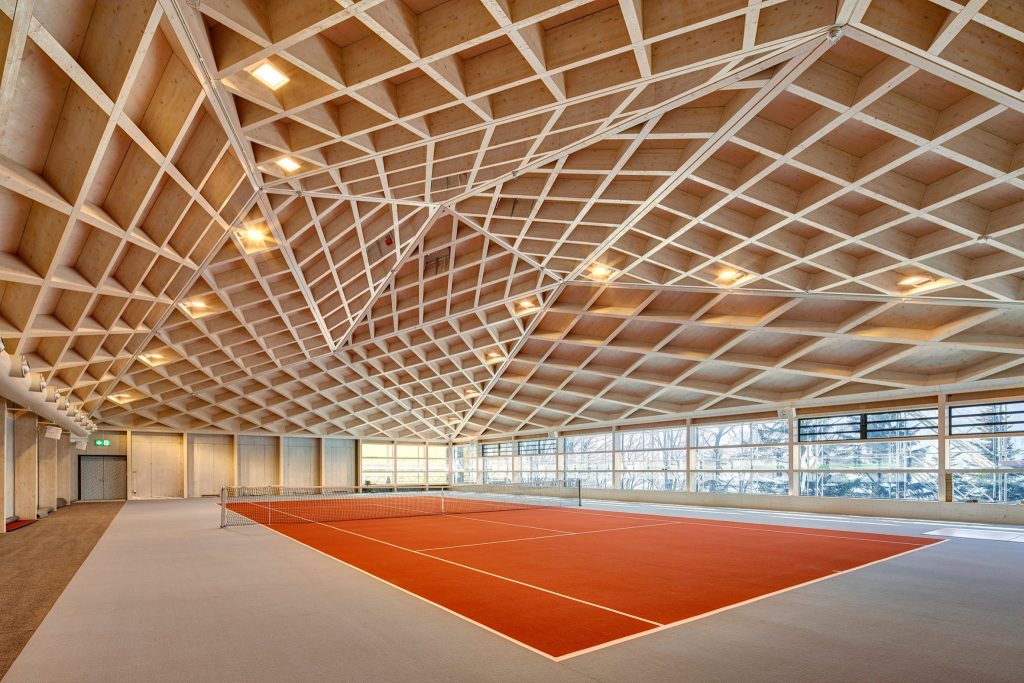
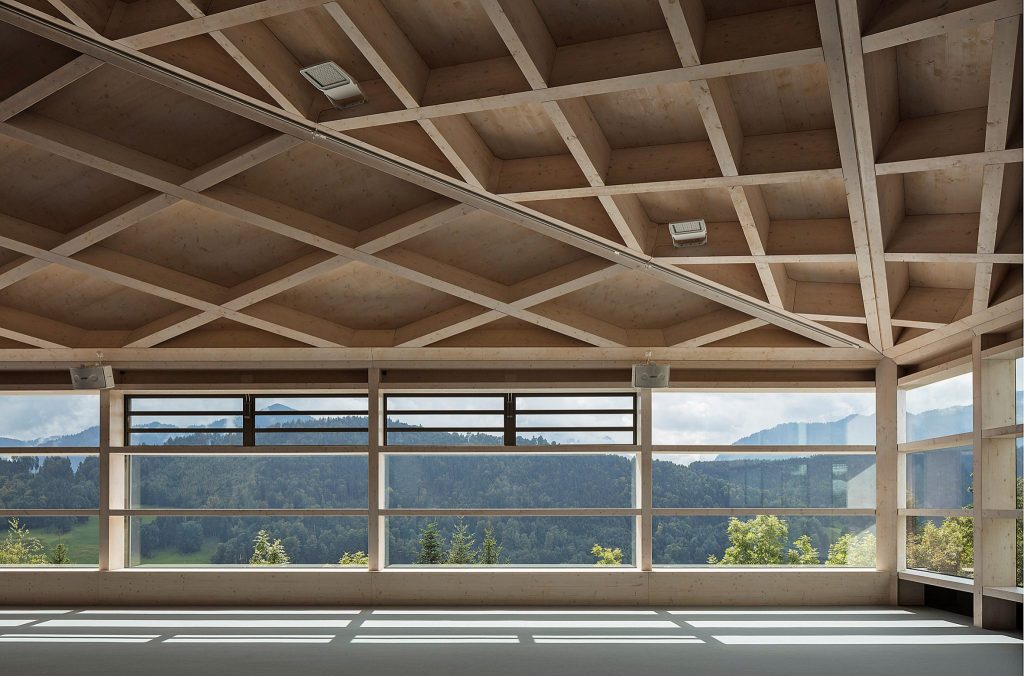
Diamond Domes by Rüssli Architekten
In winter, the outdoor tennis court is turned into an ice rink for winter sports such as skating and curling, while the two indoor courts double as event spaces.
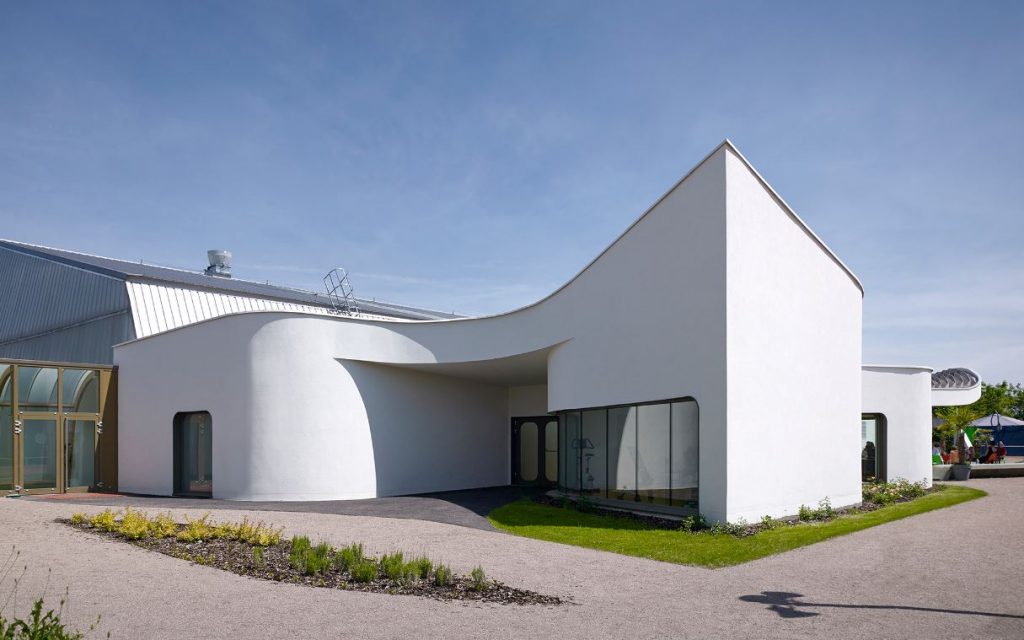
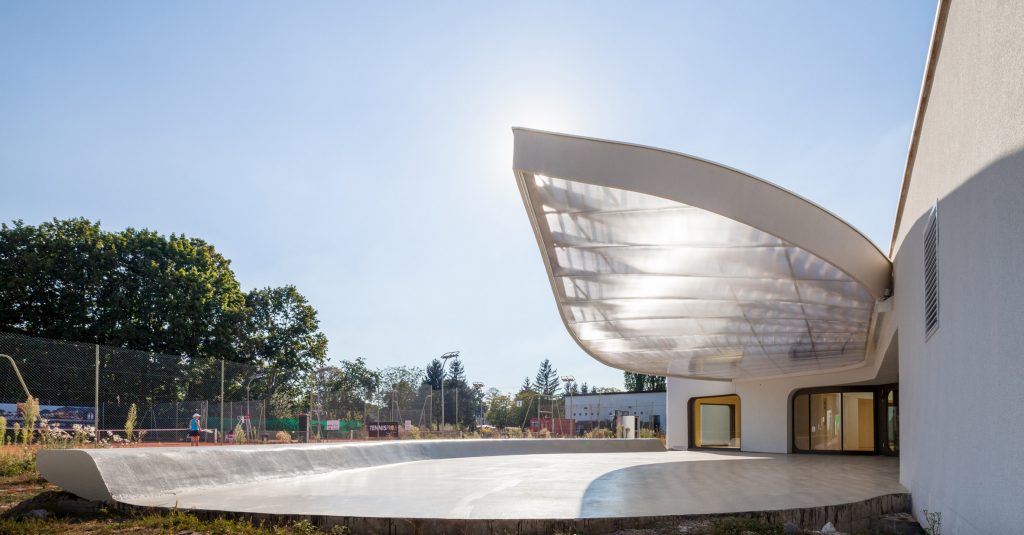
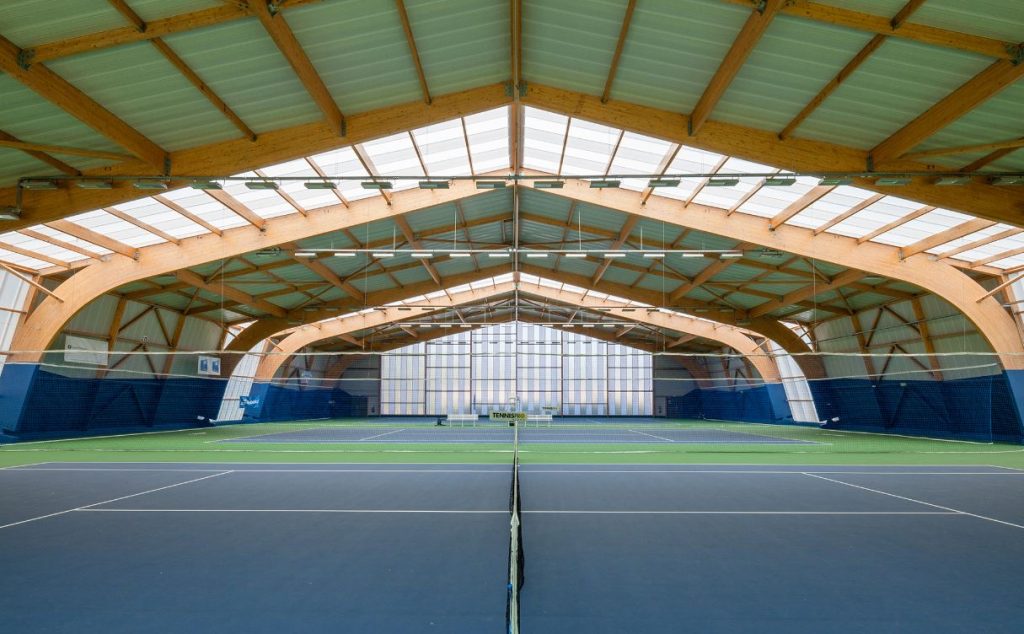
The Tennis Club in Strasbourg by Paul Le Quernec (also header image)
When designing the Tennis Club in Strasbourg local architect Paul Le Quernec was inspired by people flow in and through the building which reminded him of tennis ball dynamic trajectories. This resulted in a curving interior that features dome-shaped roofs, undulating walls and a serpentine bar. Outside, a large petal-shaped canopy covers a concrete patio of the same shape.
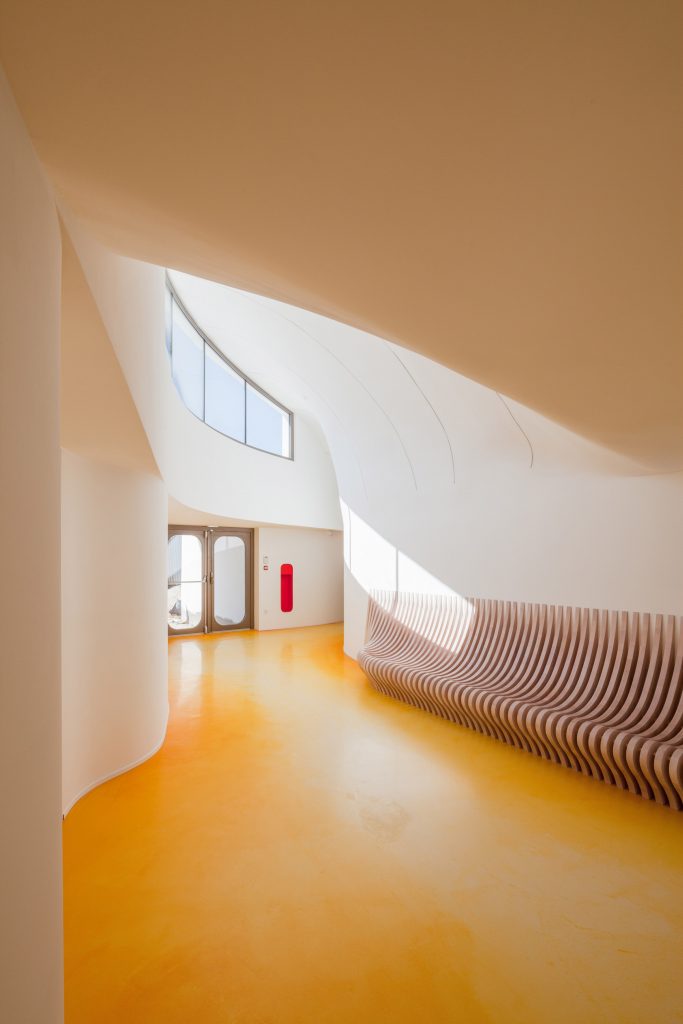
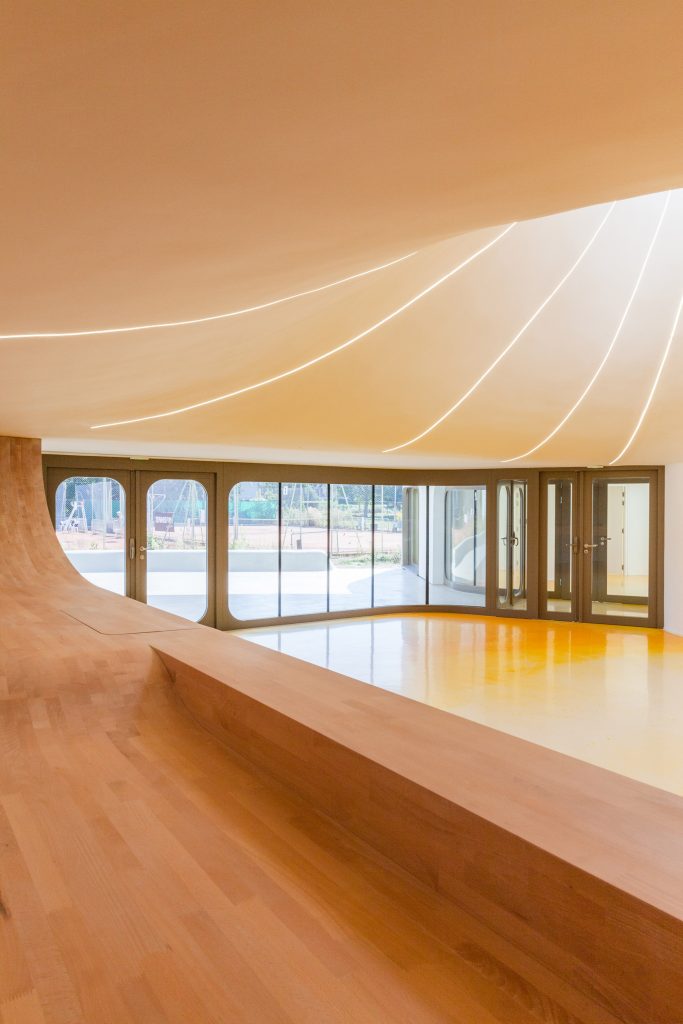
Internally, the white concrete walls of the curving pathway lead from the entrance around a series of changing rooms to the playing courts placed at the rear. Another trajectory passes the clubhouse restaurant and bar that is made up of staggered slices of wood extending up from the floor on one side and attaching to the ceiling on the other.
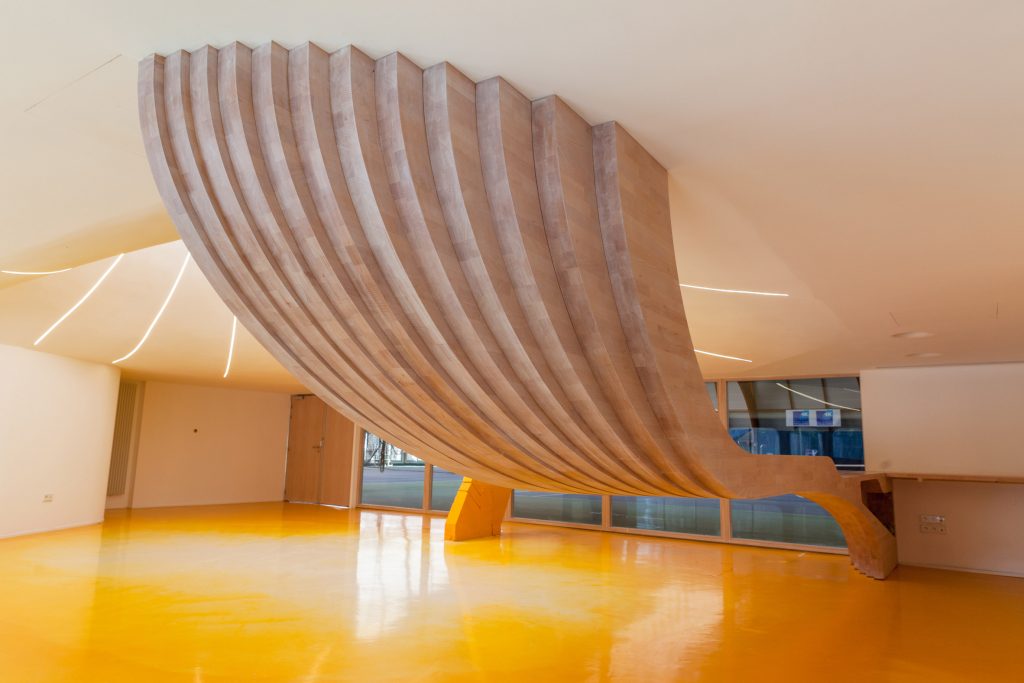
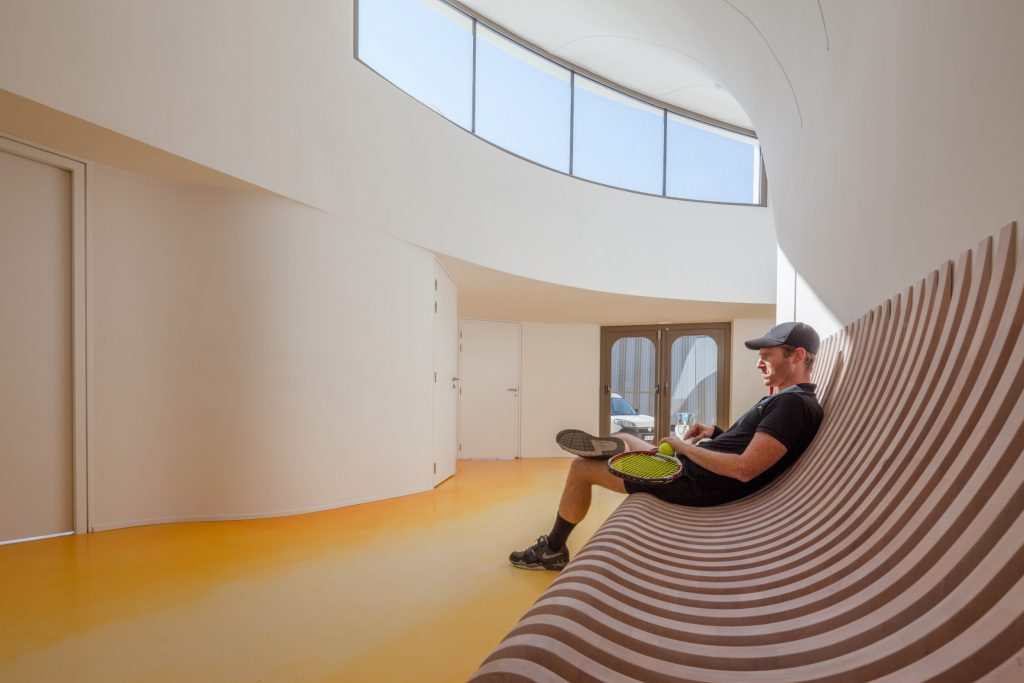
The Tennis Club in Strasbourg by Paul Le Quernec
Thin slit-like skylights in the dome-like roofs bring natural light into the space emphasizing the shape of the wells as they extend upwards. To increase the daylight effect, the floor’s colour changes from beige into a deep orange towards the borders and corners of the room.
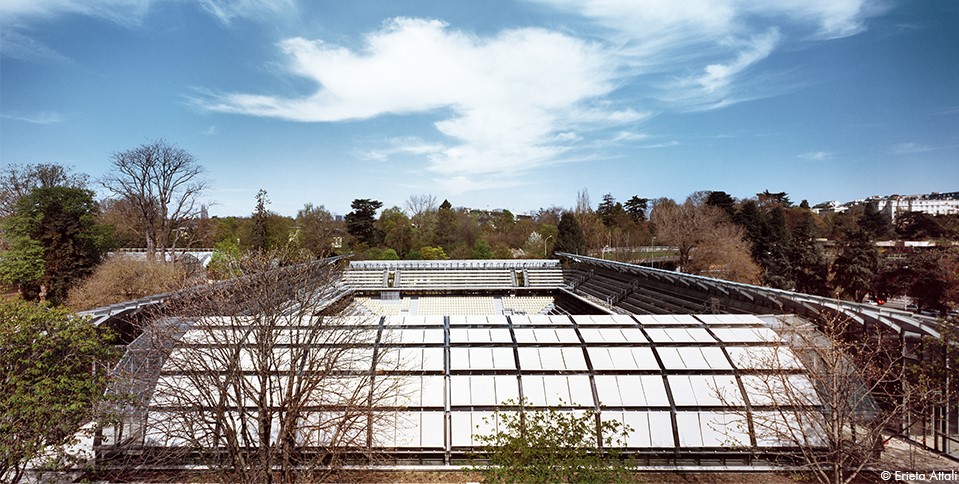
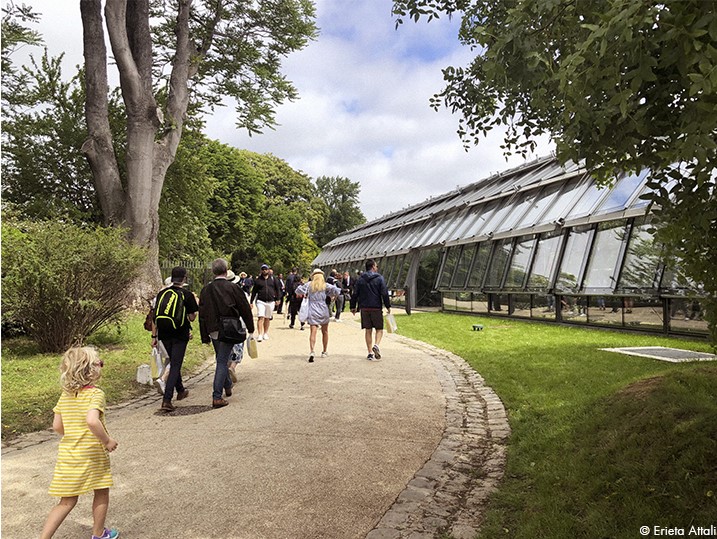
Court Simonne Mathieu by Marc Mimram Architecture & Associés
The 5,000-seat Court Simonne Mathieu at Roland Garros, home of the French Open, is located in the Jardin des Serres d’Auteuil botanical garden. To create a dialogue between nature and sports, Paris-based Marc Mimram Architecture & Associés has incorporated greenhouses into all four of the stands of the stadium, enabling the facilities to function as both a venue for the tennis tournament and an extension to the botanical garden.
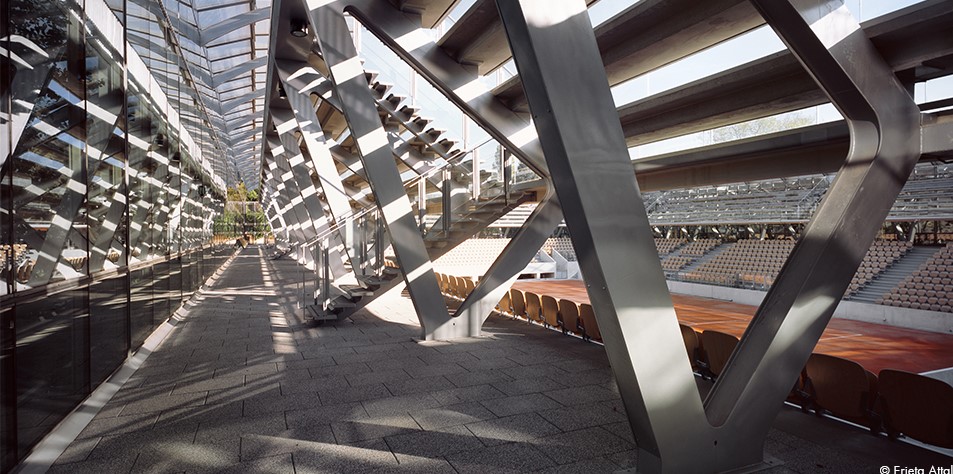
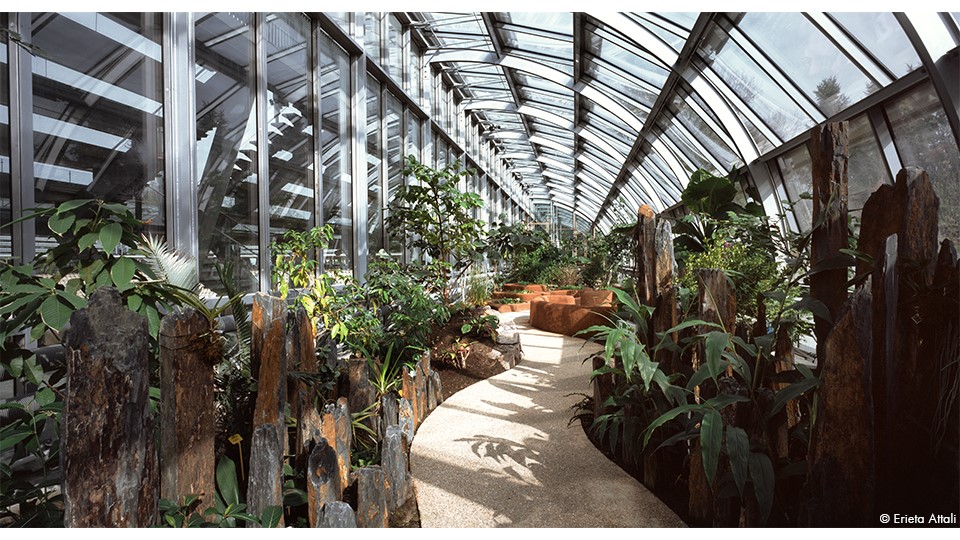
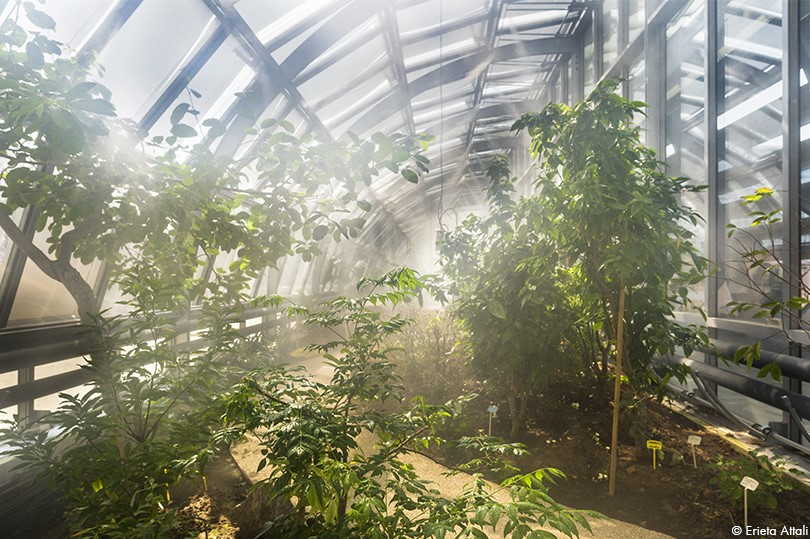
Court Simonne Mathieu by Marc Mimram Architecture & Associés
This confident contemporary architecture is designed to complement the garden’s existing 19th-century architecture. The stadium’s concourse, which provides access to the stands, runs alongside the greenhouses of curved steel and glass, so that spectators can see the botanical collections from four regions: America, Asia, Africa and Oceania.
